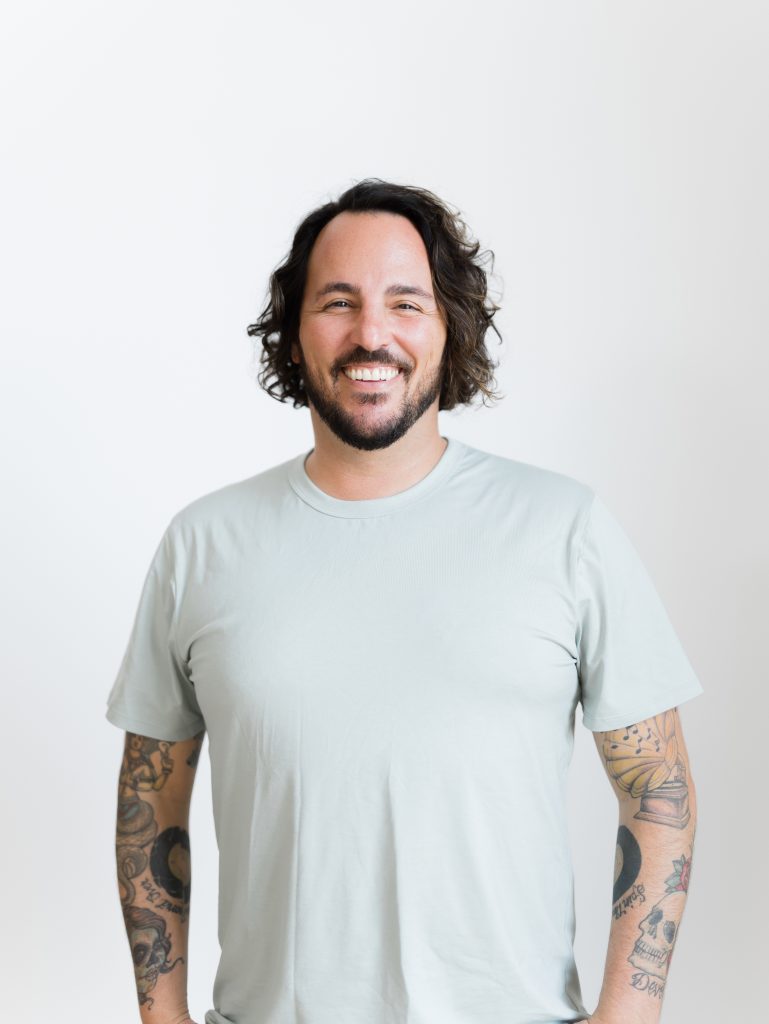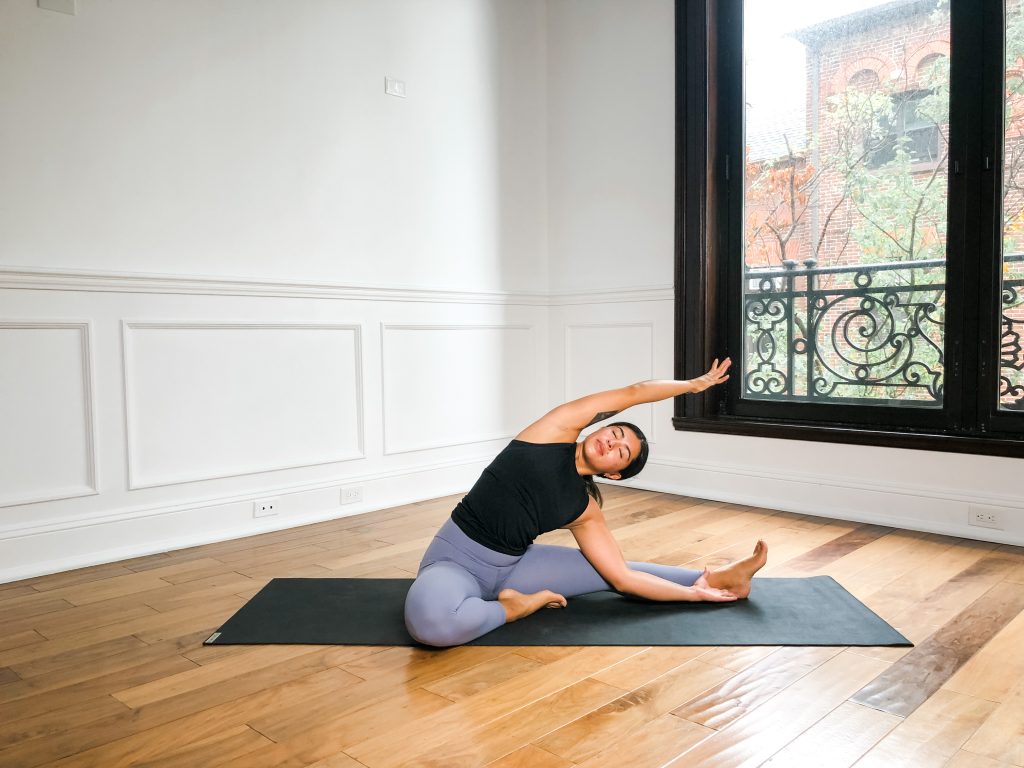
“Everyone desires more life energy. If energy could be packaged and sold in a shop, it would be the most successful business ever.”
This is a quote from the book, Light on Life by B.K.S. Iyengar at the beginning of the chapter dedicated to prana.
If you are a yoga practitioner, it is likely you’ve heard this word prana. You may have done study on prana and you might participate in pranayama practices, but what actually is prana?
Prana is the vital life force energy that is present within all beings and all of reality. It manifests physically, mentally, emotionally, and spiritually and it is the breath of life within all living forms. Every vibrational energy which exists is prana. It’s hard to even define because it is that all-encompassing.
Some things that prana is NOT: It is not the breath, although breathing is a manifestation of prana. Prana cannot be seen or picked up. Prana is not a particular substrate. It is simply, and not so simply, the vital energy which is always present before, during, and after life.
Pranayama and Prana are not the same, although they feature the same word. While prana refers to life force energy, pranayama refers to breathing practices which help to expand, move, organize, and control prana. You might have realized that when you began to practice yoga, your world shifted. Your perspective on life might have widened and after practice you might feel yourself shift into a higher frequency state. This is because of an increase in prana. That’s of course wonderful, however, If you continue to increase the available prana with no sense of organization or control, this could lead to some unfavorable circumstances such as combustion, depression from mental extremities, or unsteadiness of breath and body just to name a few.
This hopefully does not deter you or scare you in any way, but this is merely meant to point out the power and importance of pranayama practice in tending to prana. Asana helps to and is necessary to prepare the body for pranayama. With consistency, appropriate guidance, determination, and patience your practice can help you access this illuminating and transcendent tool. And guess what? It cannot be bought in a package, it is always available to you, and it is completely free…
Supporting Pose 1: Easy Seat with a Side Stretch (Sukhasana)
Easy seat is fairly accessible for a wide variety of people. Because class is often started from this position, you can pretty quickly and efficiently get into the side body lengthening which is necessary for our peak posture.
How to get into Easy Seat with a Side Stretch:
- Sit on the floor with the right shin crossed in front of the left shin.
- Take your arms out into a T-shape. Turn your whole arm (from the shoulder down to your palms) up towards the ceiling.
- Shift your torso to the left and then laterally bend to bring your left hand down to the floor about a forearm’s length away from your hip.
- Sweep the right arm over your ear and reach towards the left side wall.
- Keep both sit bones grounded. Overtime you can walk the left hand out farther coming into a deeper side bend.
Supporting Pose 2: Triangle with Arm Overhead
Triangle is always a great pose to teach the straightness of the legs. Revolved head to knee has one straight leg and one folded leg, so this pose is appropriate in teaching the actions of the straight leg. The variation with the arm overhead gets us going in the same direction as the peak.
How to get into Triangle Pose with your Arm Overhead:
- Face the side wall and step or hop your feet apart about 3 feet in length.
- Turn the whole right leg (from hip to toes) towards the front of the room. Lift the toes and lift the kneecap up.
- Take your arms out into a T-shape and turn the arm bones up towards the ceiling like you did in easy seat above.
- Shift your torso to the right and then laterally bend to bring your right hand down to your shin or a block (on the outside of your leg). Once your hand reaches the shin/block, just turn your palm and forearm to connect the arm to whatever surface you’re using. The bicep should keep rolling forward.
- Sweep your left arm up and overhead and gaze underneath your arm towards the ceiling.
Supporting Pose 3: Half Squat Pose (Skandasana)
Half squat has one folded leg and one straight leg just like our peak pose! With this particular arm variation, you have one arm reaching towards the foot of the extended leg with the other arm over your head, also similar to our peak pose. Meaning, this here is a great prep pose for our grand finale.
How to get into Half Squat Pose:
- Start in a wide leg forward fold with your hands on the ground.
- Turn the back leg and toes out slightly and fold the leg.
- As you fold the leg and start to shift towards the back of the mat, turn the front leg and toes up towards the ceiling so both legs are externally rotated. Lengthen the front leg as much as possible so the heel can connect to the floor.
- Bring the back of the pelvis towards the floor and lift the chest and head up.
- Bring your hands into prayer shape.
Peak Pose: Revolved Head to Knee (Parivrtta Janu Sirsasana)
Revolved head to knee is a forward fold and a twist. I would say there’s even a bit of a backbending element as well. Prana requires the body to be steady and strong and that the spine is supported in all directions making this the perfect posture for our discussion in prana.
How to get into Revolved Head to Knee Pose:
- Sit on the floor in a seated straddle position.
- Fold the right leg in half and externally rotate the leg so the knee is resting towards the floor. If the knee doesn’t touch the ground, you can bring a block or blanket under the knee.
- Keep the left leg extended as you spread the toes and lift the kneecap.
- Take your arms out into a T-shape and turn the arms and palms to face the sky.
- Shift your torso to the left and then laterally bend to bring your left forearm along the inner left shin. The traditional posture connects this hand to the inner arch of the foot.
- Sweep the right arm up and overhead to reach towards the front of the room in the direction of your left foot. The traditional posture connects this hand to the outer arch of the foot.
- There should now be a window created between your two arms. Using your exhale, turn your torso to the right, widen your elbows, and look underneath your right arm to the sky.


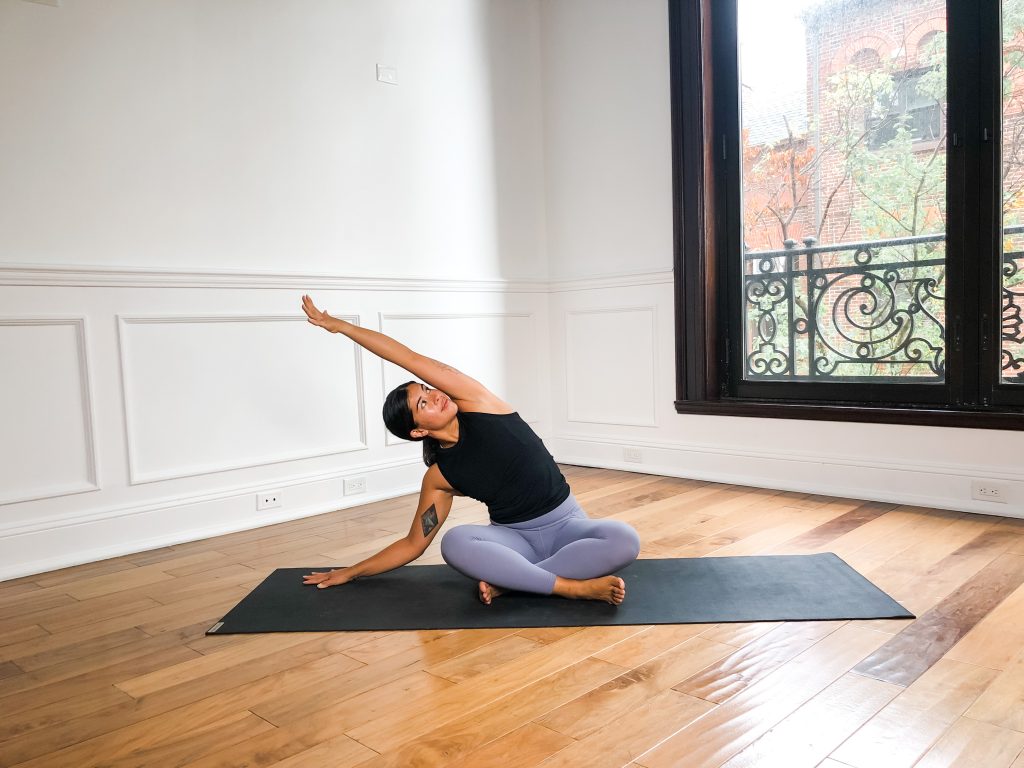
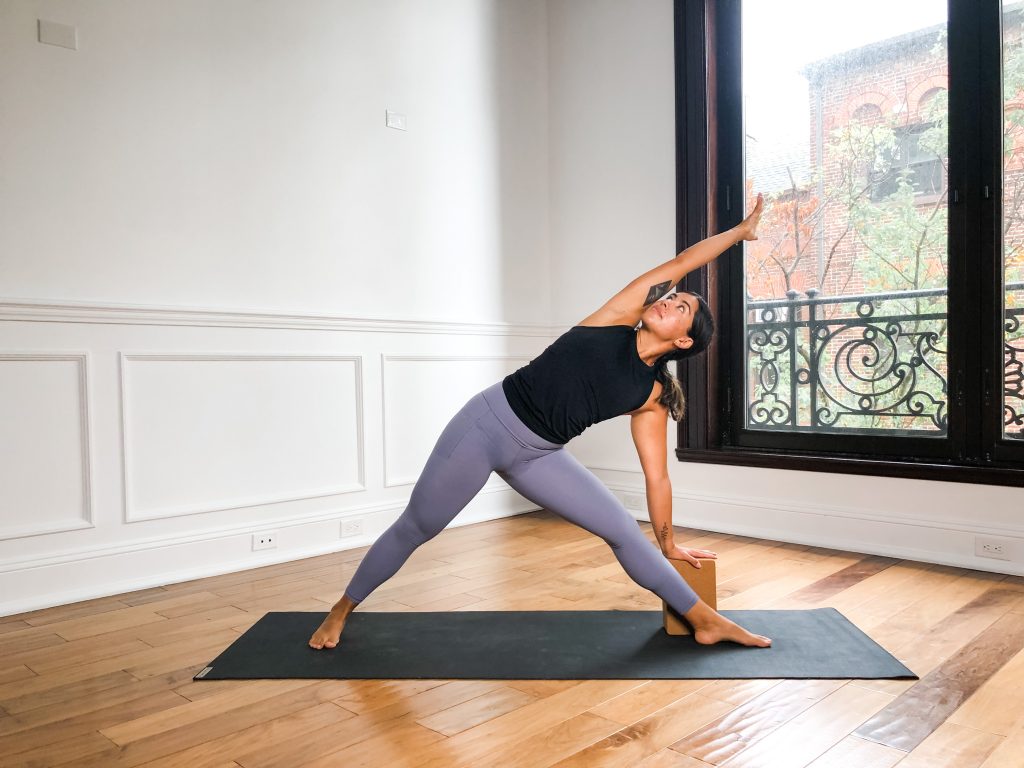
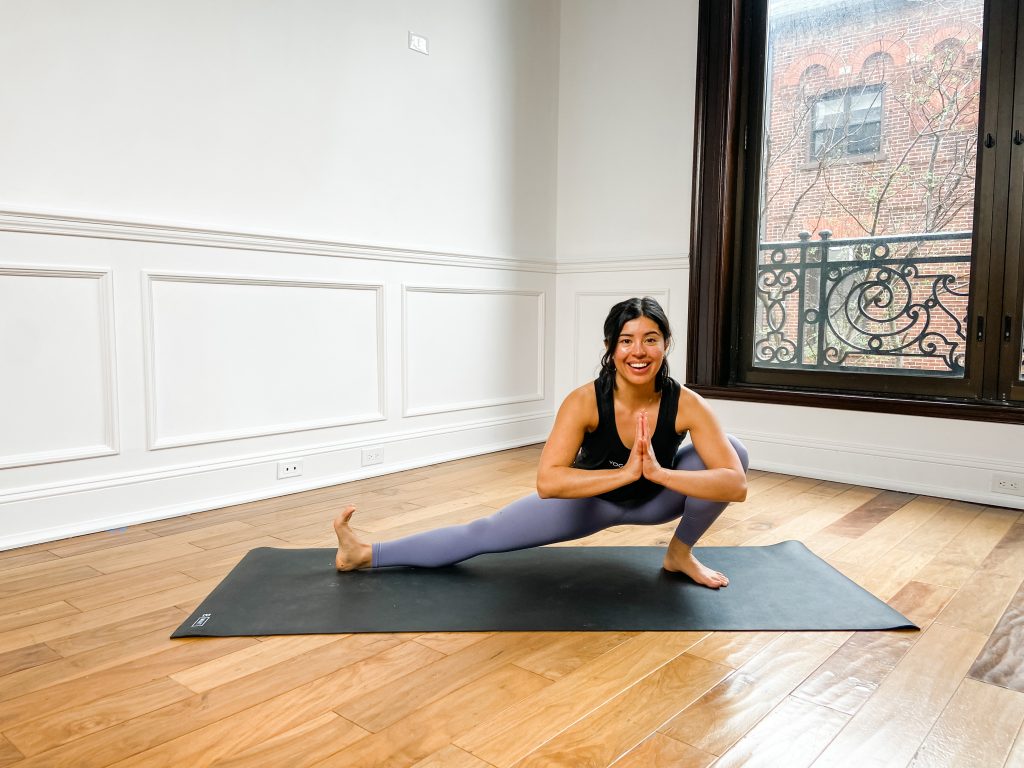
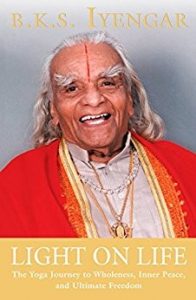
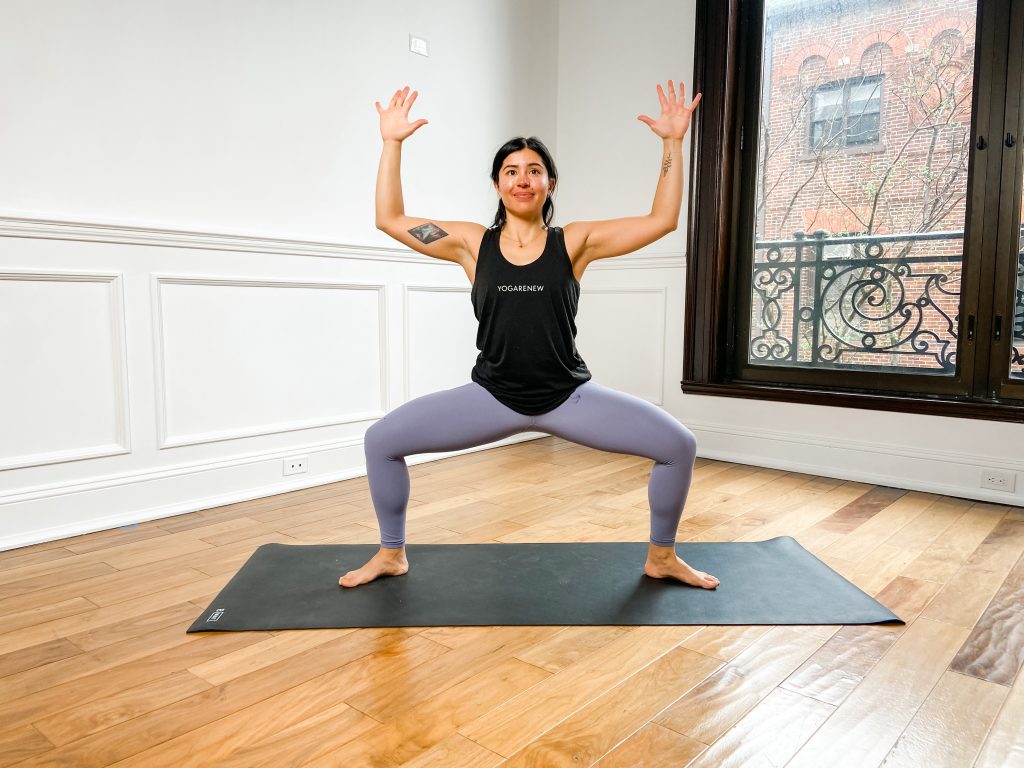
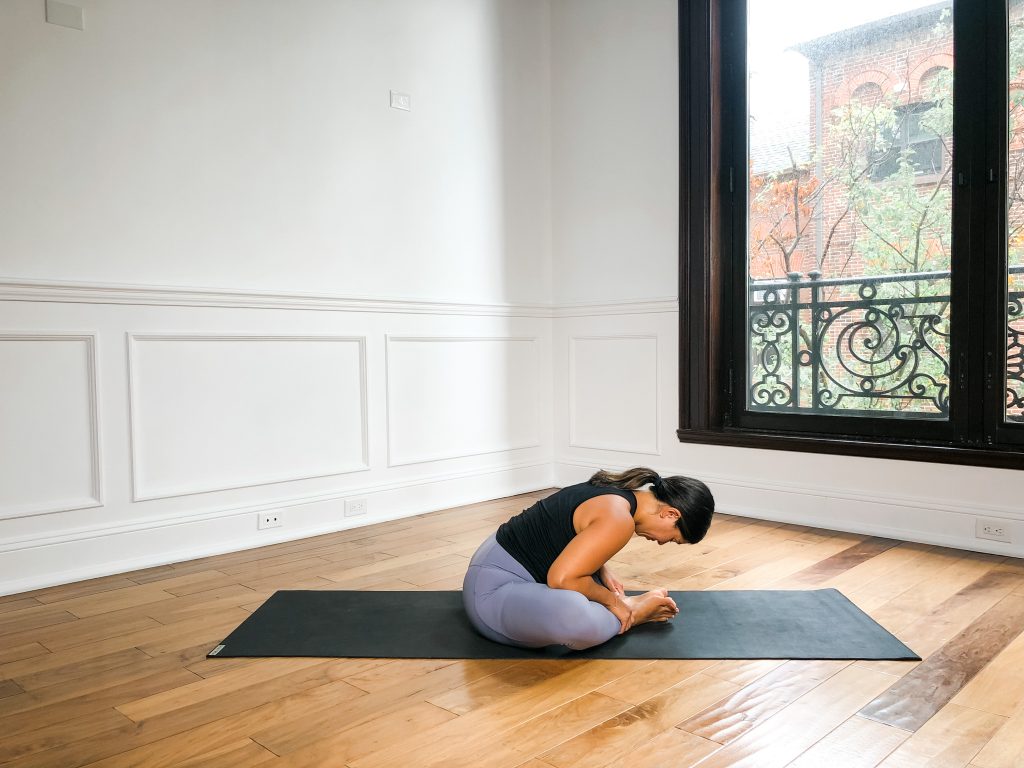
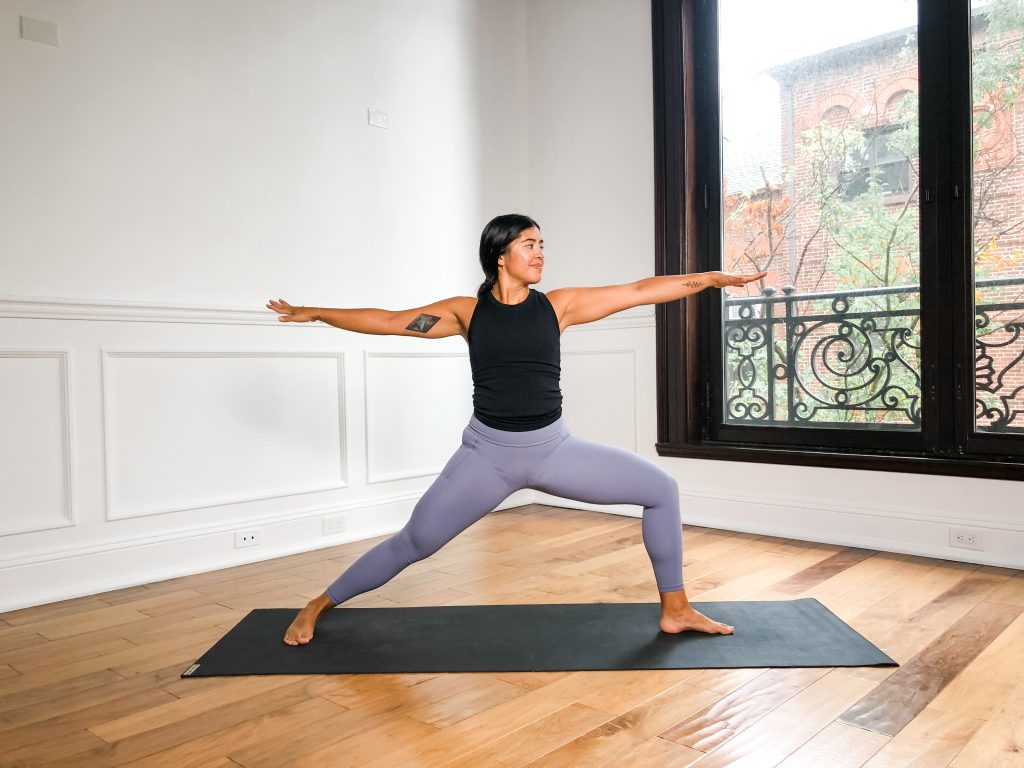
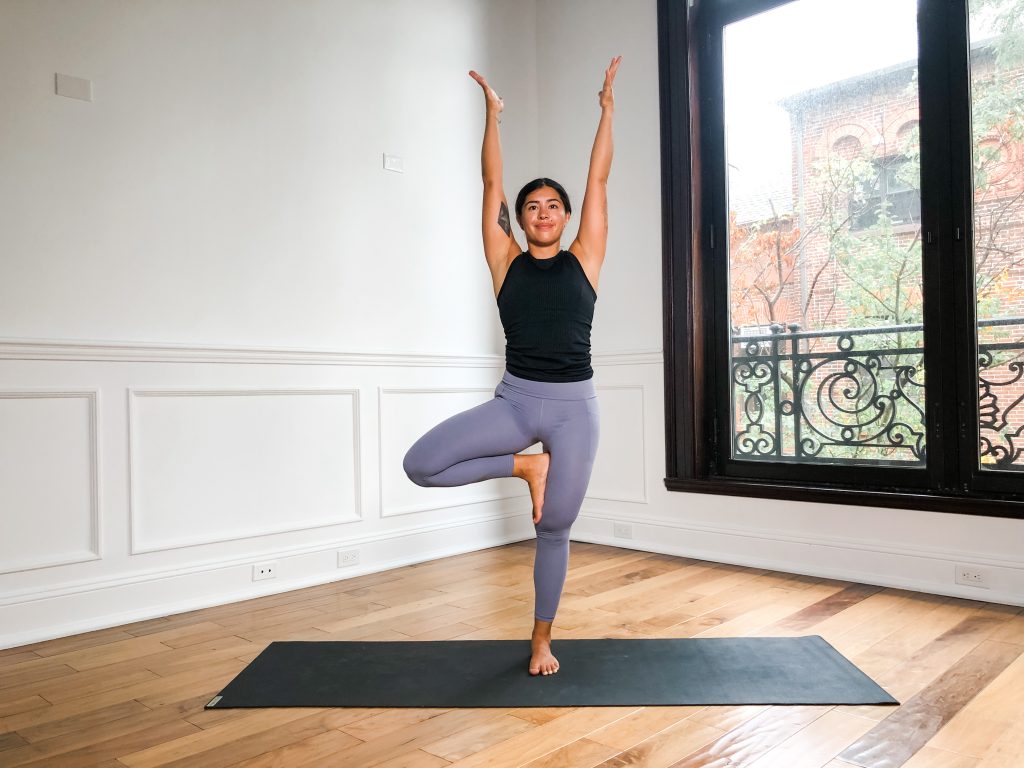
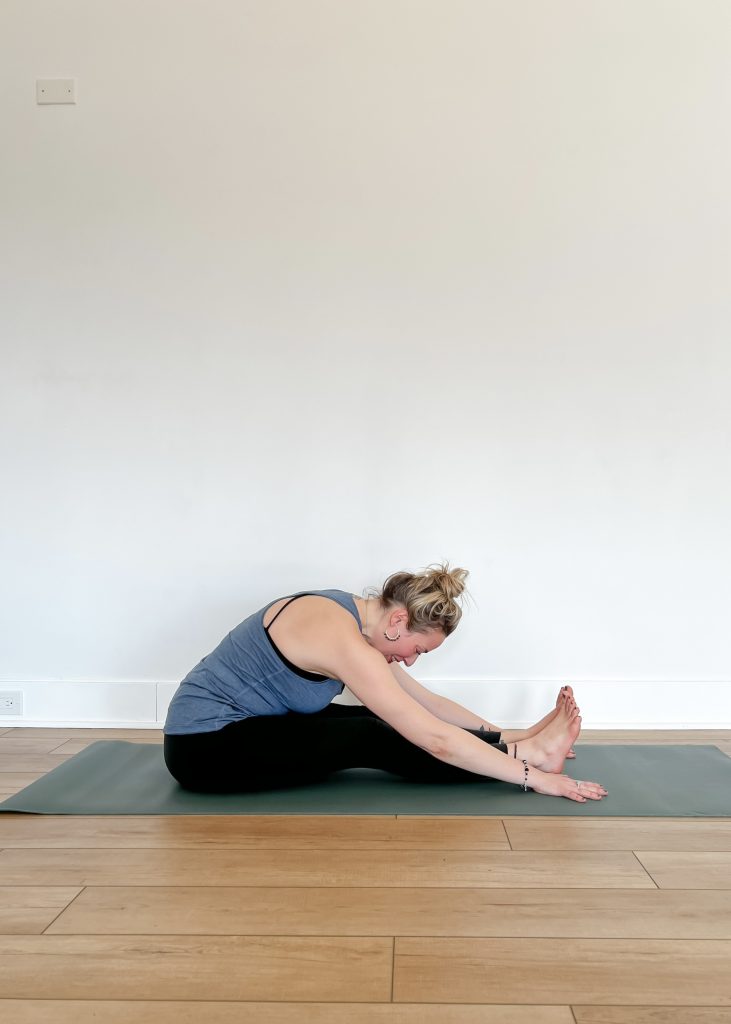
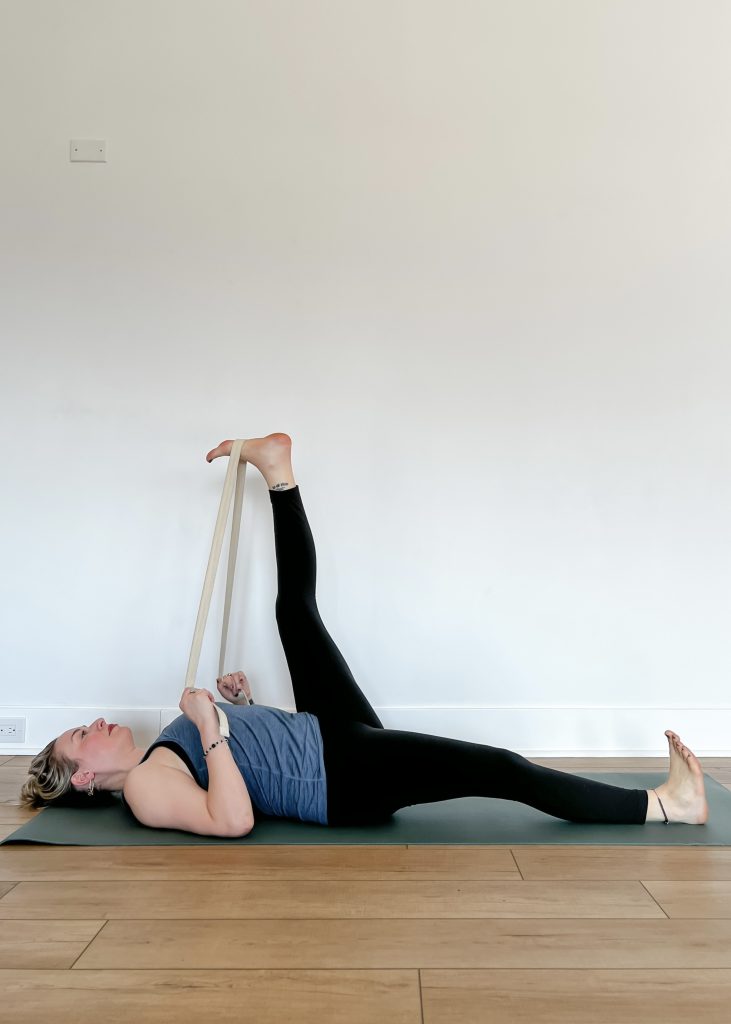
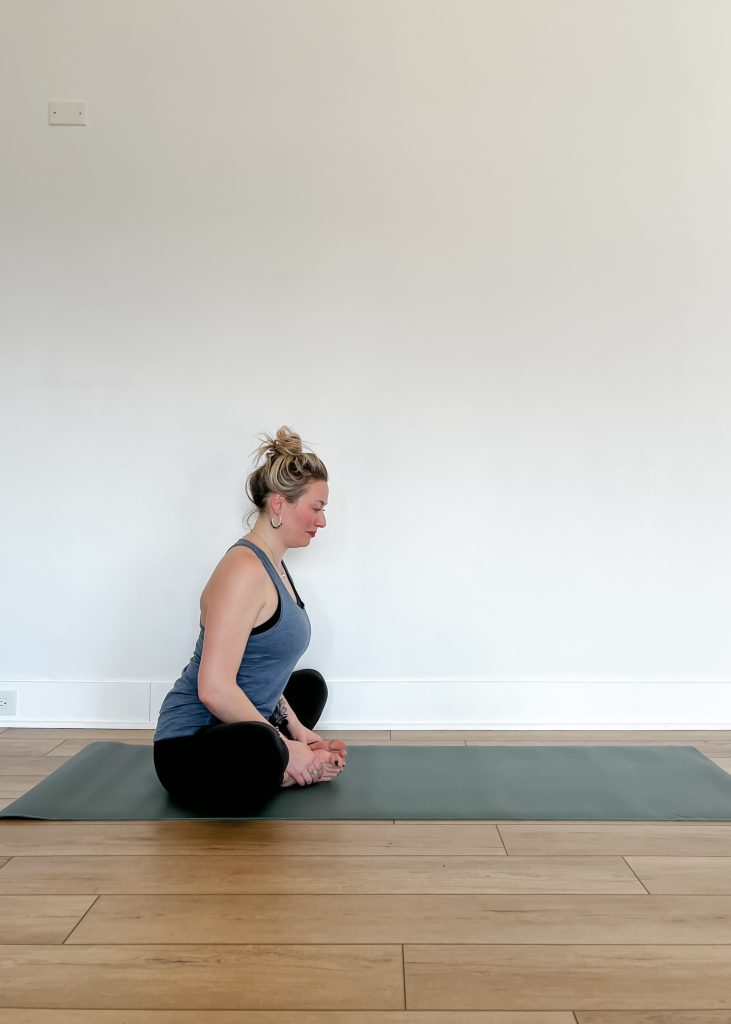
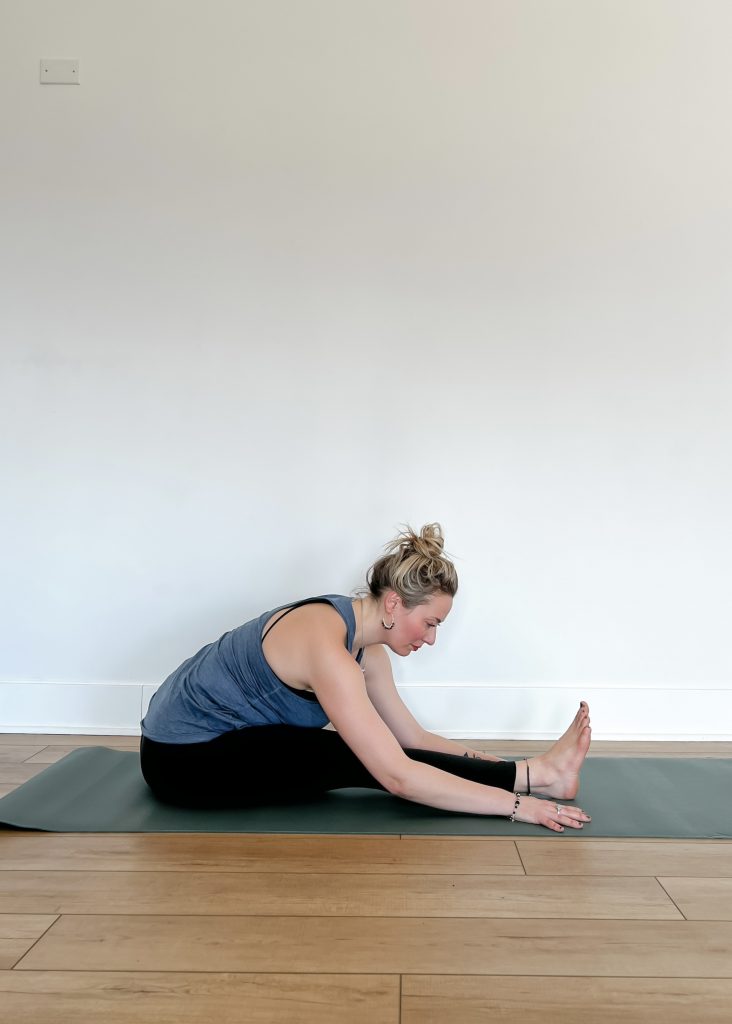
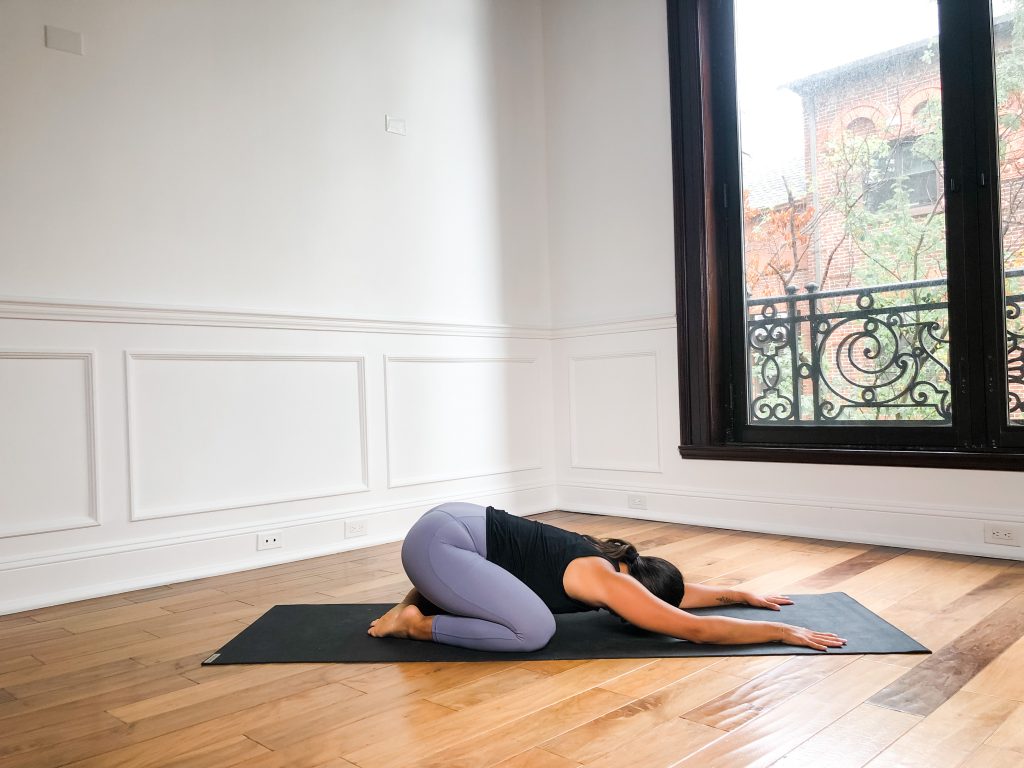
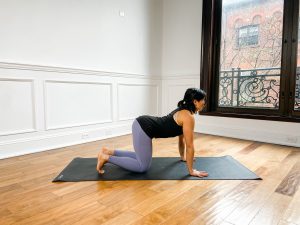
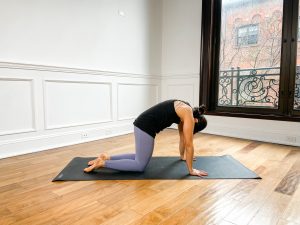
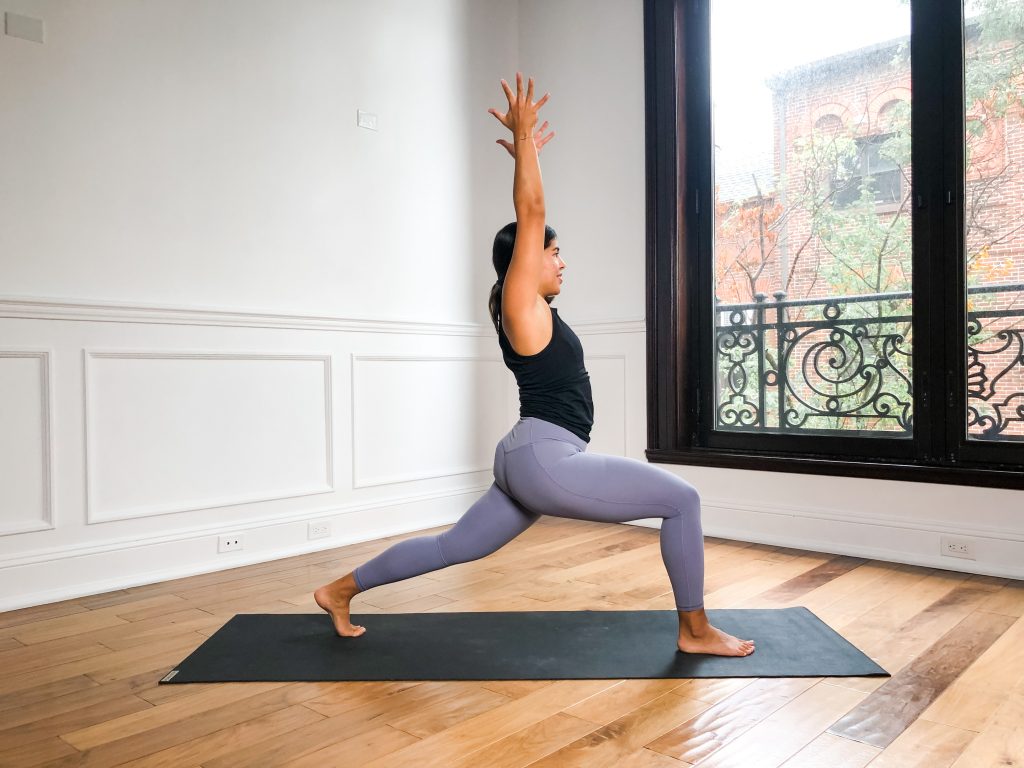

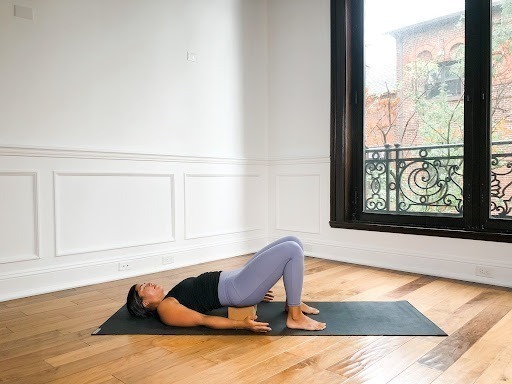
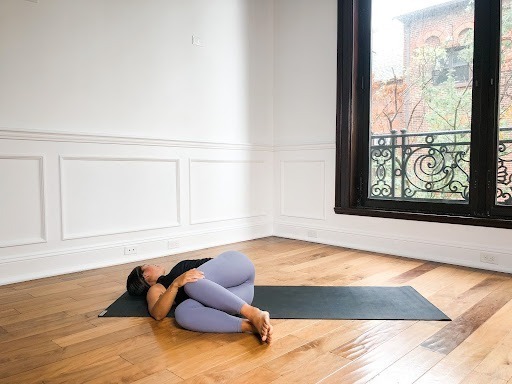
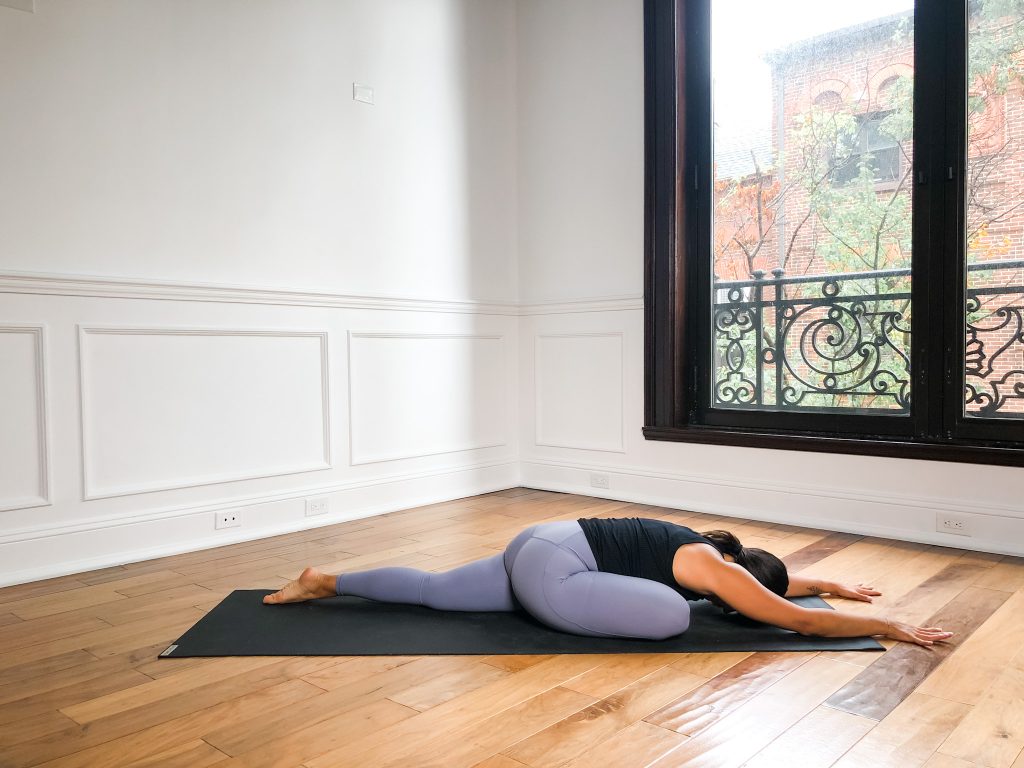
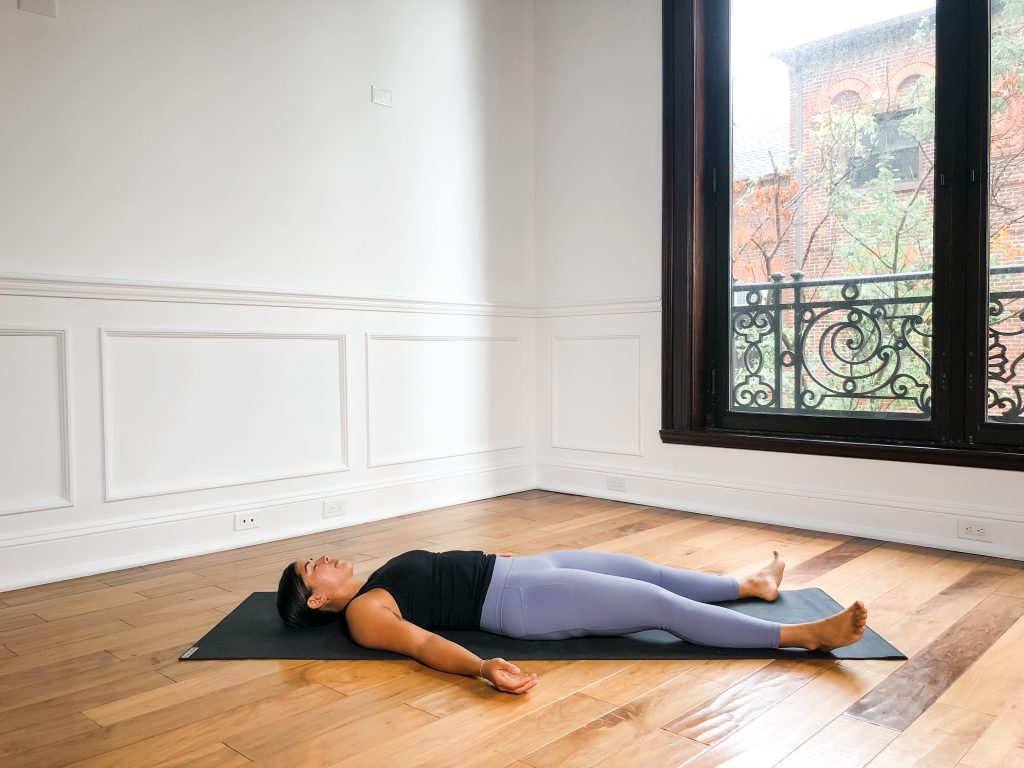
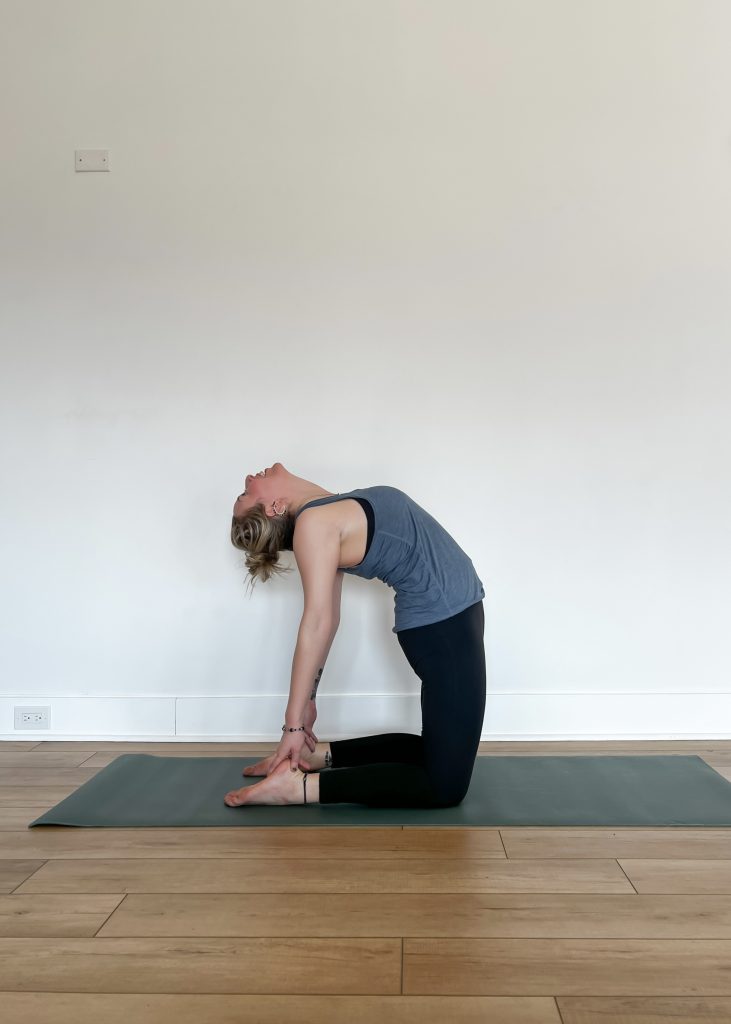
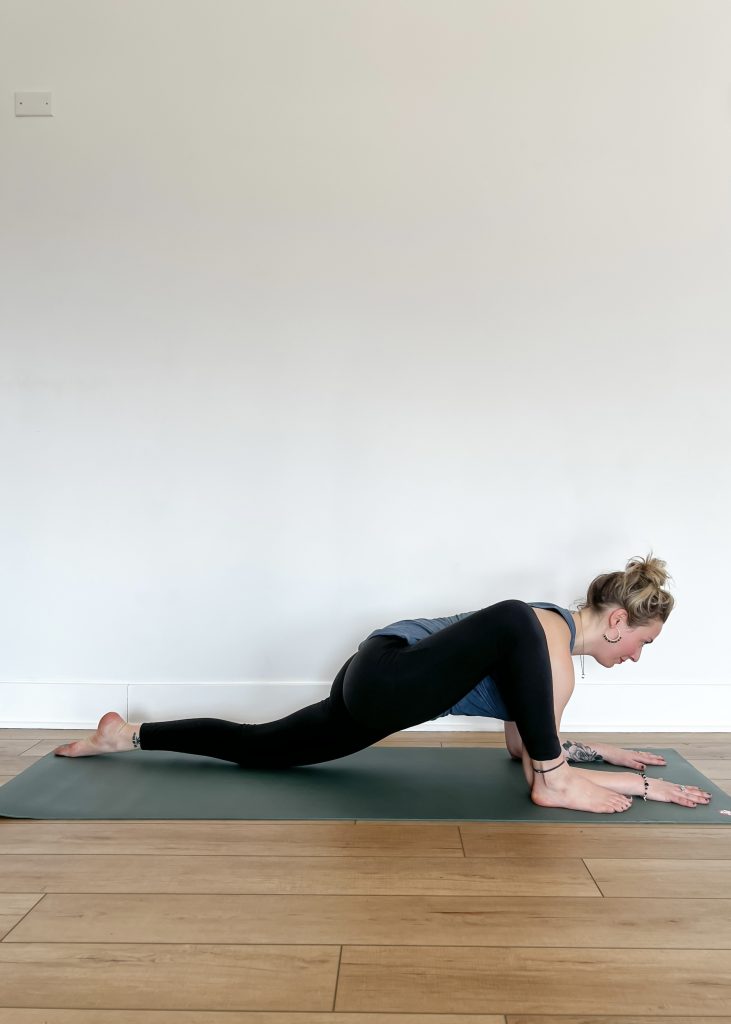
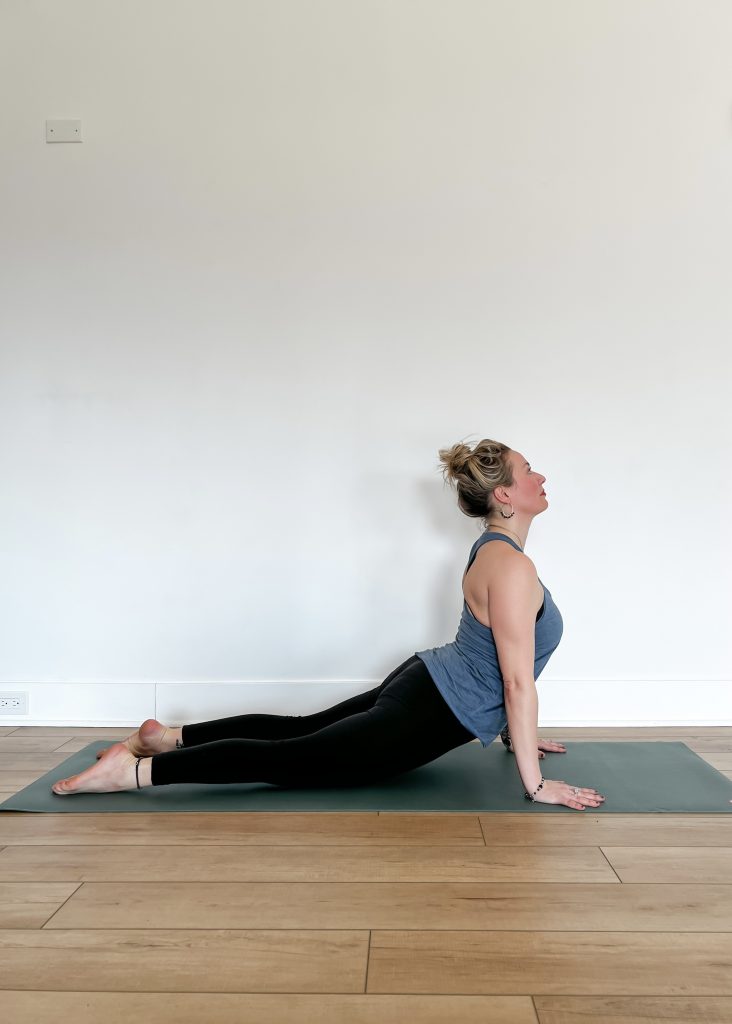
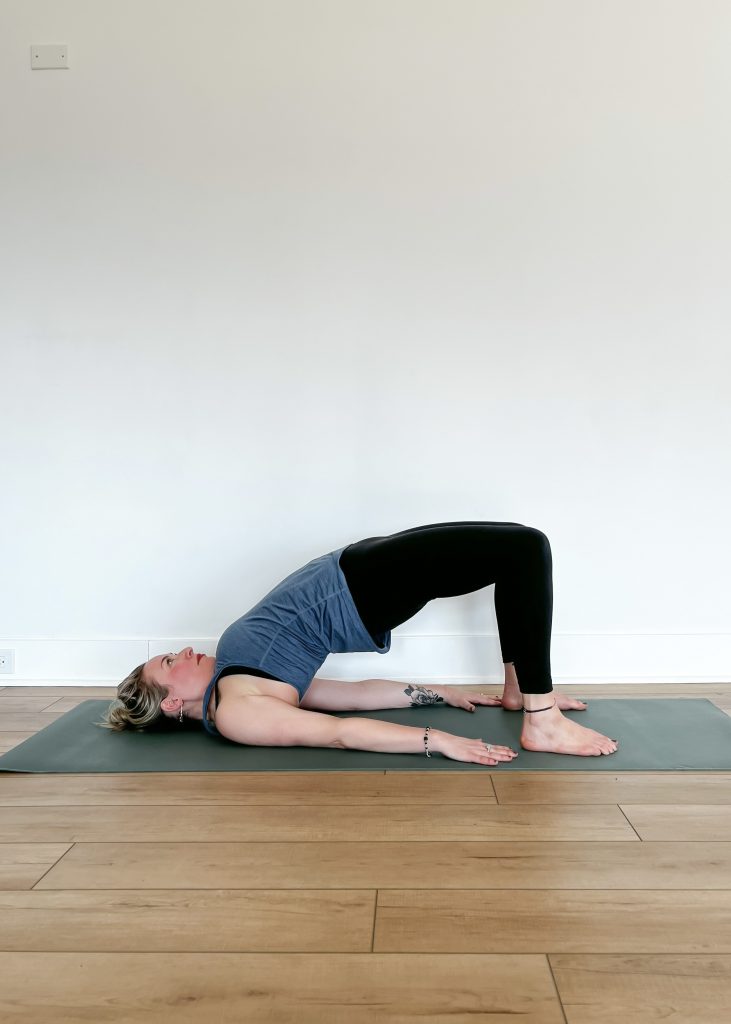
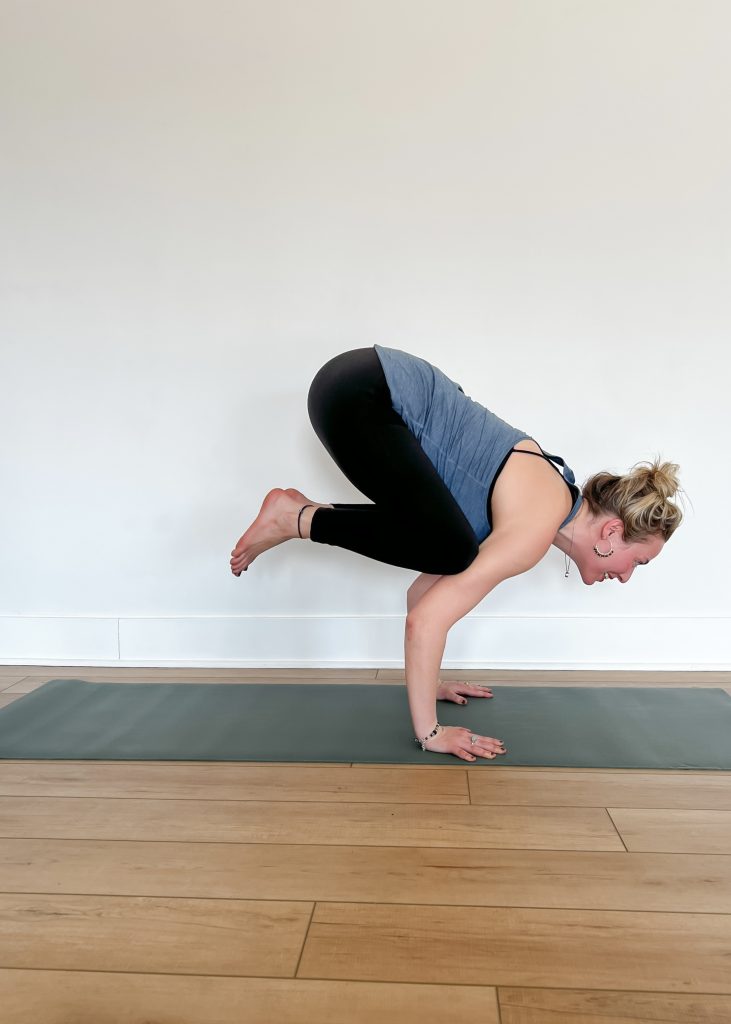
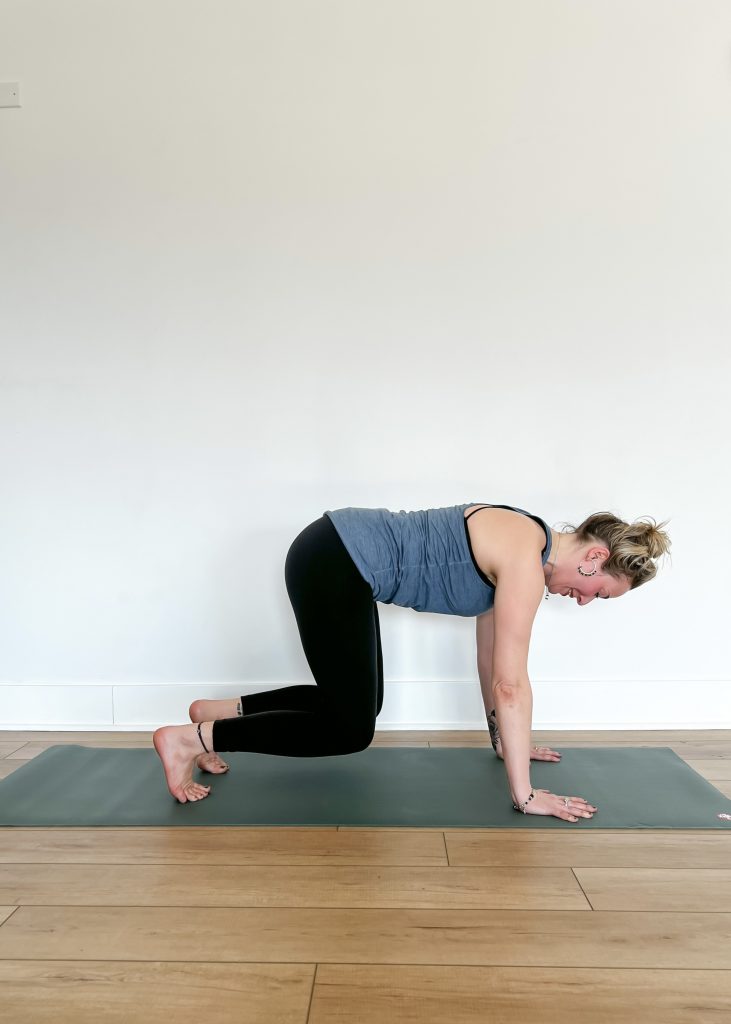
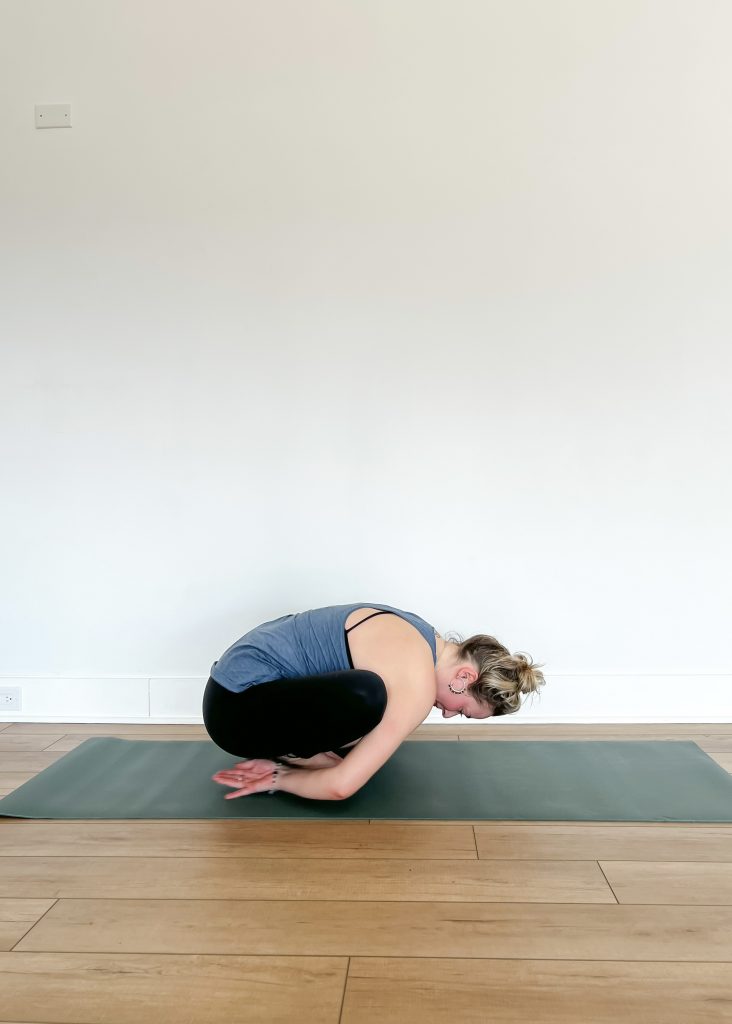
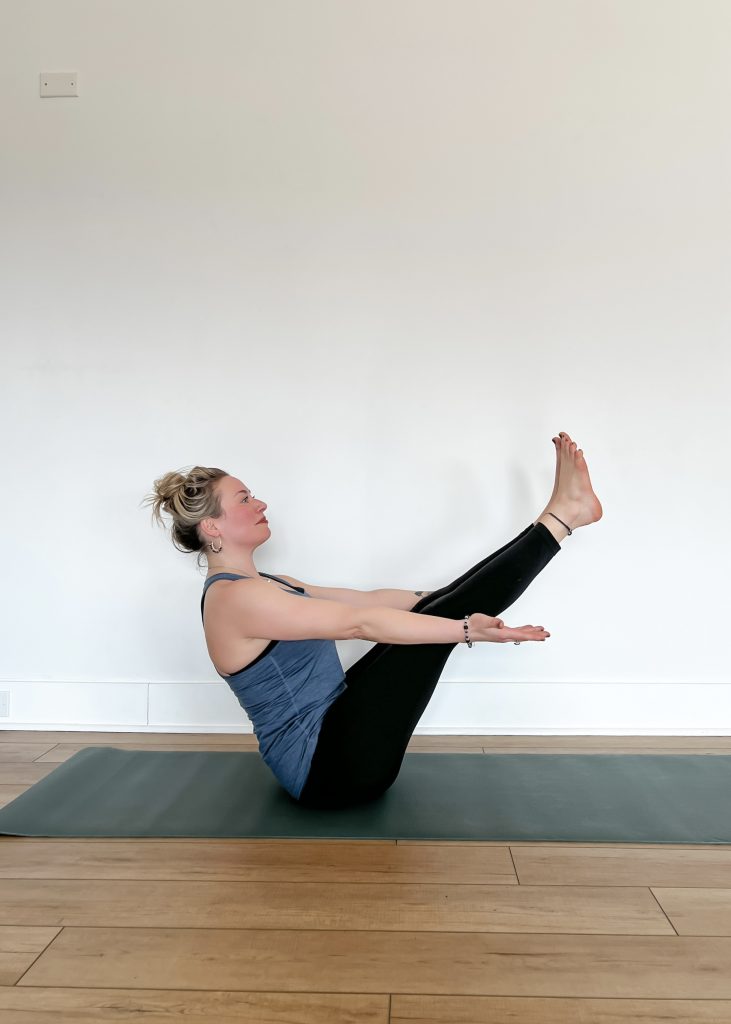
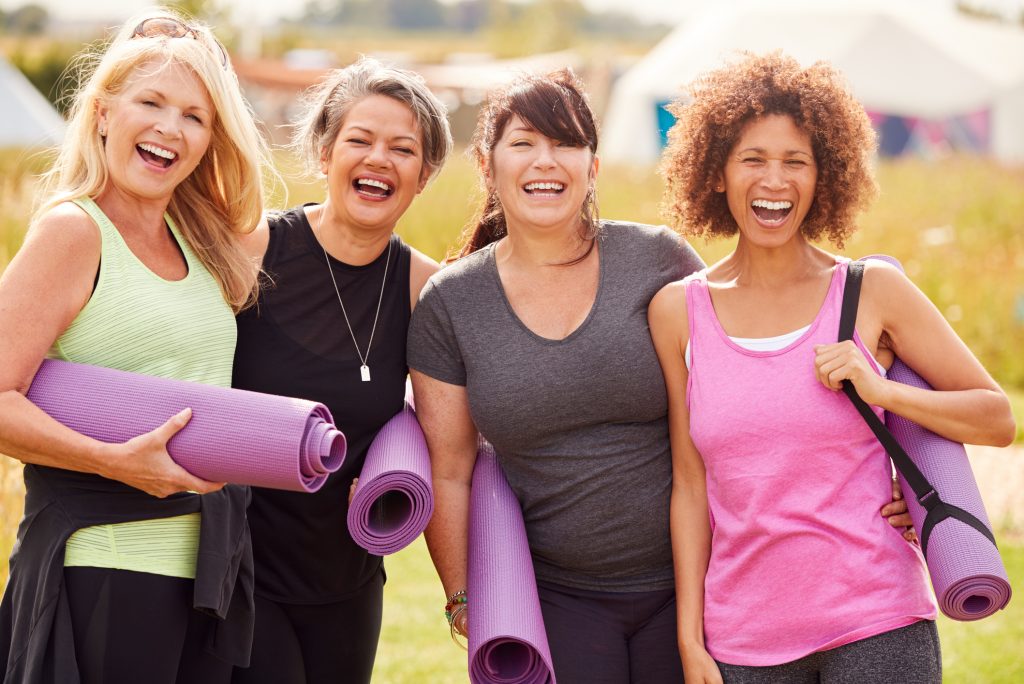
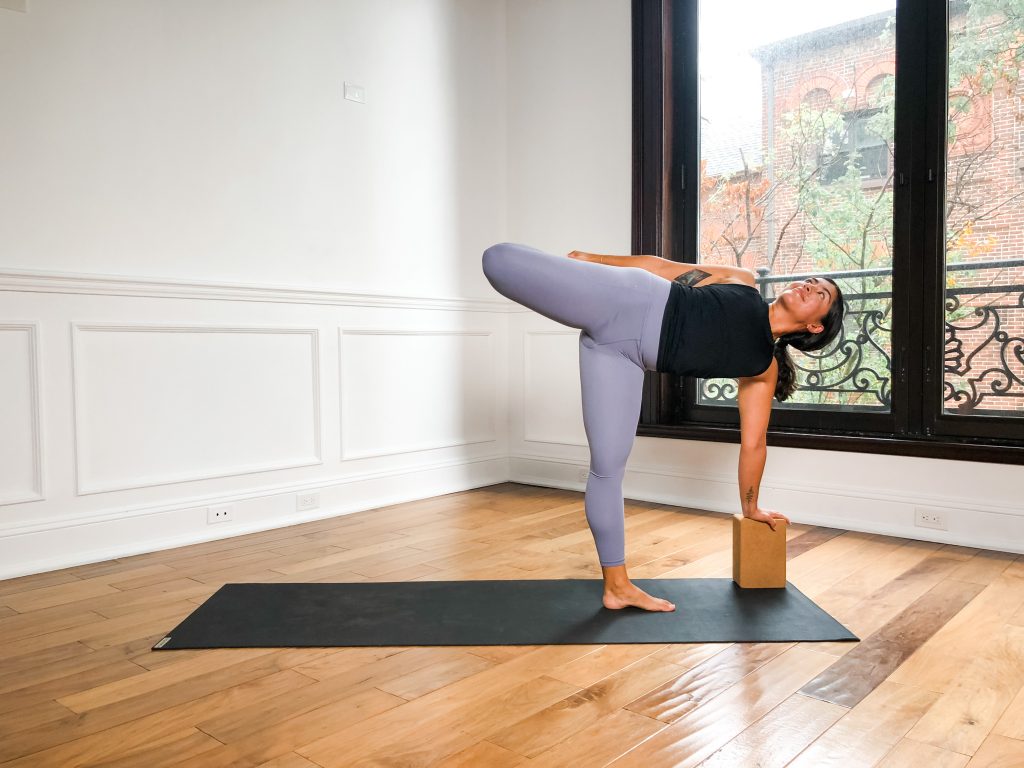
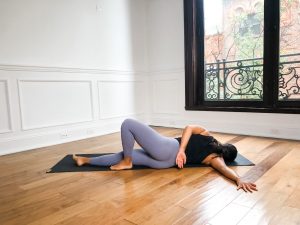
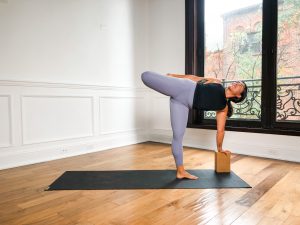
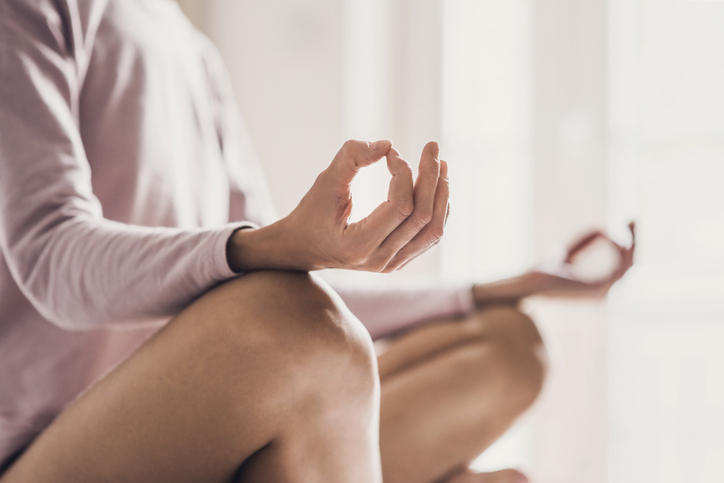
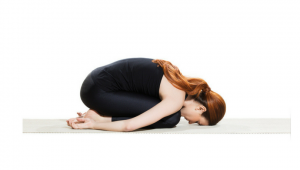 Allow yourself to release and let go in Child’s Pose. As you ground down and surrender towards the mat, imagine as though your hands are outreaching out to receive more things to be grateful for in your life.
Allow yourself to release and let go in Child’s Pose. As you ground down and surrender towards the mat, imagine as though your hands are outreaching out to receive more things to be grateful for in your life.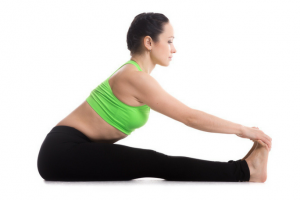 Seated Forward Fold helps us to relax our mind and bodies. As you do this pose, focus on surrendering into gratitude for the things in your life that you appreciate. Feel the grounding of the earth beneath your sit bones as you root them into the ground and feel appreciation for the earth supporting you.
Seated Forward Fold helps us to relax our mind and bodies. As you do this pose, focus on surrendering into gratitude for the things in your life that you appreciate. Feel the grounding of the earth beneath your sit bones as you root them into the ground and feel appreciation for the earth supporting you.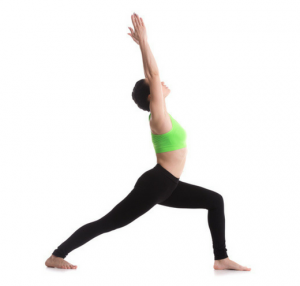 As you come into Warrior I Pose, allow your arms to reach up towards the sky as if you are receiving more things to be grateful for in your life. You can also imagine as if your arms are outreaching to give to someone else.
As you come into Warrior I Pose, allow your arms to reach up towards the sky as if you are receiving more things to be grateful for in your life. You can also imagine as if your arms are outreaching to give to someone else.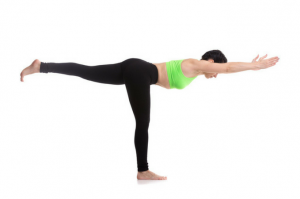 Warrior III is a grounding and energizing pose. When in this pose, again imagine the outreaching of your arms forward are reaching to give to another person. Allow the feeling of giving to fill your heart. Feel the earth beneath your grounded foot, supporting you.
Warrior III is a grounding and energizing pose. When in this pose, again imagine the outreaching of your arms forward are reaching to give to another person. Allow the feeling of giving to fill your heart. Feel the earth beneath your grounded foot, supporting you.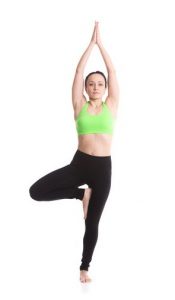 Ground down through your standing foot and reach your arms upwards. Imagine the opening of your arms as if they are tree branches opening up to the sky and earth around you, ready to receive all the good and blessings in your life.
Ground down through your standing foot and reach your arms upwards. Imagine the opening of your arms as if they are tree branches opening up to the sky and earth around you, ready to receive all the good and blessings in your life.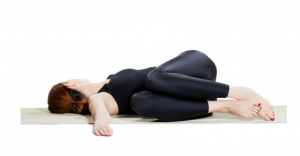 Stretch and detoxify your body and mind with this deep twist. As you melt into supine twist pose, allow yourself to linger here for a few breaths longer than usual. Allow your mind to relax and your heart area to fully open as you express your gratitude for your life.
Stretch and detoxify your body and mind with this deep twist. As you melt into supine twist pose, allow yourself to linger here for a few breaths longer than usual. Allow your mind to relax and your heart area to fully open as you express your gratitude for your life.